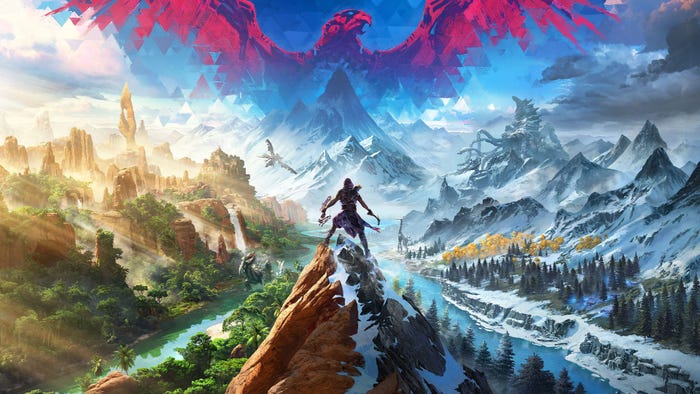
Featured Blog | This community-written post highlights the best of what the game industry has to offer. Read more like it on the Game Developer Blogs.
Game Analytics 101 Part 3: Understanding Social in Games
Game Analytics 101 Part 3: Understanding Social in Games

Part 3: Understanding Social in Games
In the first two posts I laid out the basics of metrics, how to set them up, what the major ones are, etc. Now, I want to focus on what is perhaps the main case for employing big data and analytics: understanding your customer.
It doesn’t matter if you’re a company operating on a B2B, B2C, or even C2C model. In order to make better business decisions, everyone needs to understand who it is they’re selling to and how that target functions within the context of the organization. But first, I want to convince you that player-player relationships matter, and that we tend to be blind to them.
The best example is known as the “birthday paradox”. Let’s say we have a bunch of people gathered in a room. You might want to know how many people need to be in that room to ensure that two of them have the same birthday. The answer for 100 percent certainty, of course, is 367 -- one for every day of the year, including Leap Day, plus one. However, statisticians found that there is a 99.9 percent probability of two people having the same birthday with just 70 people in the room, and 50 percent probability can be achieved with just 23 people. How is that possible?
Here you are, the red dot, and here are 29 other people. Shouldn’t your odds be 29/365? No, because this graph is woefully incomplete. You, like me, are an egocentric creature. You can’t help but think of the world revolving around you, and of course it does not.
Here’s what it actually looks like:
You are still the red dot, but now you realize that all of those other people are just like you and they may have relationships with someone who isn’t you. It is difficult to ditch the egocentrism, but here is the reality.
When you add all of the possible relationships, you see very quickly that there are well more than 365. The odds of two people in line having the same birthday are actually pretty high.
This is very counterintuitive. The reason why is that we always put ourselves at the center. And, as developers, we tend to do the same thing. We think about the relationship we have with our players, not the many, many relationships they have with each other.
So, do players have a substantive impact on each other? Yes, it turns out that players have a massive and important impact on each other—something your community managers have always known, but have never been able to quantify.
You may call this social influence or whatever you like. I call this socially driven behavior Social Value because it’s a thing that you want more of and because it’s created by social connections. You could come up with your own measure here. I like mine obviously, but the idea is that you want to have some measure of social impact. If all you have is “who are the guild leaders?” or “who has the most friends?” well that is still a lot better than random.
Here’s my definition: Social Value is the extra behavior created by a person across their social graph. It’s behavior that would not occur without this person. We measure it in dollars, play sessions, page views, and the like.
A proviso: there are a lot of ways of looking at what people talk about as an indicator of their relationship, or of what’s in the zeitgeist. This is a class of tools called semantic mining. My opinion is that these are pretty solid for zeitgeist-level thinking, but not very good for account-level. In science, we always prefer knowing what someone did to what they said. Actions and events are the gold standard, and are of course what literally contributes to the bottom line.
So, let’s talk about play time. A person with a lot of Social Value is going to induce their friends to play more. When this person plays, their friends’ play goes up. When they don’t play, their friends’ play goes down.
If this were in microtransactions and spending, when this person spends, their friends spend more.
This is not Lifetime Value. Traditional lifetime value (or “LTV”) is how much behavior you can expect from a person before they churn out. Typically it’s delivered in dollars. Some people measure it in spending to date. More sophisticated approaches measure it in predicted future spending.
Done properly, your measure of social importance is separate from the value created by the game itself. This means your LTV should be asocial.
Because of that, these two values are mutually exclusive. This means you can use them to truly see where revenue is coming from. And, if you put them together, you get your bottom line:
Someone’s lifetime value + their social value = true total value
Let’s walk through an example. Imagine a person has an LTV of $43. We think they’ll spend that much more before they go away. Great, now let’s say that same person also has a social value of $53.
Their interactions with their friends cause those people to spend another $53. That means this person actually contributes $96 to your bottom line.
In other words, if this person were to go poof tomorrow, your business would make $96 less than if they stayed. Your opportunity cost for this player is $96, yet the best LTV model in the world would only think they were worth $43.
This also highlights something really important about these scores, which I’ll dig into below: your big spenders aren’t necessarily your big influencers.
What if you can’t measure them in terms of dollars? You’d still want to attach some kind of score to the LTV. Maybe you come up with a 1 to 10 value. Put that alongside the LTV and you’re going to have a better assessment of their true worth.
In free-to-play games we call our most valuable players by the unflattering term “whales.” These are the players with the highest LTVs. They are a tiny minority paying everyone’s bills.
Now I’ve introduced the idea that there are those who have a big social impact, and so it makes sense to call these people Social Whales.
OK, so who are these people? Interestingly, they are not the same as the big spenders. Why not? Think about it—it’s a totally different kind of playing psychology. Those tiny few people who spend a ton on games are often people with either a lot of money or a lot of issues. Those who spend just a lot are often people who spend to enjoy. They derive satisfaction by having the best kit.
That’s very different than deriving satisfaction from the community experience. Those people who spend the most are rarely the most social. There can certainly be overlap, but we’ve never seen the biggest LTV whale be near the top of Social Value in a game.
Who are these people? Sometimes these are formal group leaders of clans and guilds, but most often they are simply regular players with charisma and a positive effect on others. And we need to be careful here when we think about large scales. A ton of social value comes from the one friend of a group of 2-4 others who acts as a leader or driving force. It’s best to think less about who’s a celebrity in a large community and more about who is the “local” celebrity among a small group. These are the players with 1, 2 or 200 friends who make an impact.
Some Social Whales spend little or no money at all, but they are still very impactful on the bottom line. The analogy I like to use is the ripple on the pond. When a social whale does something, it ripples out to others. Some players spend $0, yet generate hundreds or thousands of dollars. And others spend a lot, but are actually driven by these social whales.
Using our measure, we see Social Value account for between 5 and 70% of playing time and spending. That huge range is due to different genres and game mechanics. The more interdependent players are, the higher Social Value will be. You can imagine a single-player casual game at one end of the spectrum and highly interdependent mechanics like tank-healer-damage dealer at the other end. I’ll share more detail on these trends and patterns in the future.
Read more about:
Featured BlogsAbout the Author(s)
You May Also Like







